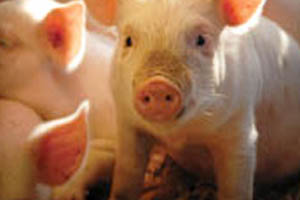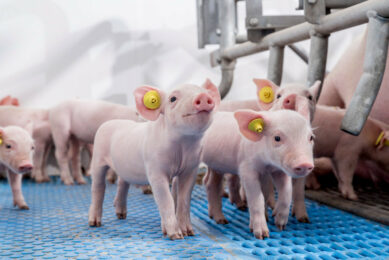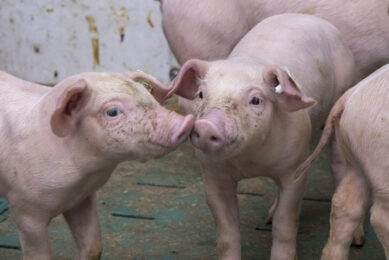Study: Alternative animal protein sources for weanling pigs

Protein sources of animal origin provide highly digestible protein in diets for weanling pigs. Fish meal is commonly used in starter diets, but its increasingly high cost is leading producers to look for alternatives, said a researcher at the University of Illinois.
New research from the University of Illinois is shedding light on the nutritional value of four alternative animal proteins as sources of protein and energy for weanling pigs.
“Two new animal proteins that are on the market are hydrolyzed porcine intestines and a spent hen-soybean meal mixture but there are no published nutritional values for these two ingredients. We wanted to determine the energy concentration and digestibility of amino acids in these ingredients,” said Hans H. Stein, a University of Illinois professor of animal sciences.
“We also know that the composition and processing of chicken meal and poultry by-product meal can vary so we tested those ingredients as well,” he added.
Chicken meal is prepared from clean flesh and skin of chickens with or without bone derived from the whole carcass of poultry. Poultry by-product meal is produced from the offal of slaughtered chickens and includes feet, necks, undeveloped eggs, and intestines.
Stein explained that both ingredients have been used to replace fish meal in swine diets. The other two ingredients tested were hydrolyzed porcine intestines and a mixture of hydrolyzed carcasses of spent hens and soybean meal.
Stein’s lab conducted two experiments. In the first, they determined the concentration of digestible, metabolizable, and net energy in chicken meal, poultry by-product meal, hydrolyzed porcine intestines, and the spent hen–SBM mixture. In the second, they determined the standardized ileal digestibility of crude protein and amino acids in the same ingredients. Both studies included conventional soybean meal for comparison.
Results of the research demonstrated that the concentration of digestible and metabolizable energy was greatest in poultry by-product meal (5,069 and 4,586 kcal/kg DM, respectively) and hydrolyzed porcine intestines (4,702 and 4,298 kcal/kg DM).
The concentrations of digestible and metabolizable energy in spent hen-soybean meal mixture (4,419 and 4,255 kcal/kg DM), and soybean meal (4533 and 4091 kcal/kg) contained similar energy concentrations. Chicken meal (4,298 and 3,816 kcal/kg) contained the least digestible and metabolizable energy of all of the tested ingredients.
“The energy in all of the animal protein sources was well digested, but chicken meal has less fat than the other animal products and thus has a lower energy concentration,” Stein said.
He added that energy concentrations in the diets will not be compromised if hydrolyzed porcine intestines or the spent hen–soybean meal mixture are used.
The digestibility of amino acids was greater in conventional soybean meal than in any of the animal protein sources tested. Of the animal protein products, the spent hen–soybean meal mixture had the greatest digestibility of amino acids. Digestibility values were similar for poultry by-product meal and chicken meal, whereas hydrolyzed porcine intestines contained the least amount of digestible amino acids.
“In general, the animal protein sources contained a high concentration of collagen, which has poor digestibility,” Stein said. “The spent hen–soybean meal mixture had greater amino acid digestibility than the other animal protein sources because soy protein is highly digestible.”
According to Stein, the results indicated that the spent hen-soybean meal mixture may be used as a source of digestible amino acids in diets fed to weanling pigs, though he added that this should be confirmed with growth performance studies.
The study, “Concentration of digestible and metabolizable energy and digestibility of amino acids in chicken meal, poultry byproduct meal, hydrolyzed porcine intestines, a spent hen–soybean meal mixture, and conventional soybean meal fed to weanling pigs,” was recently published in the Journal of Animal Science and was co-authored by Oscar Rojas, a Ph.D. candidate in the Stein Monogastric Nutrition Laboratory at Illinois. It is available here.











